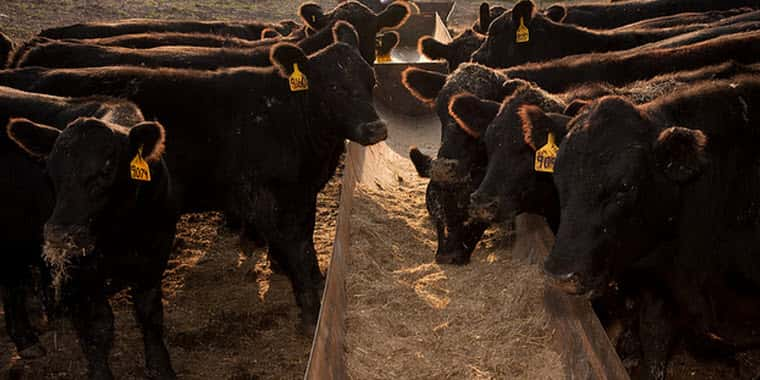By Russ Daly, SDSU Extension Veterinarian, State Public Health Veterinarian
Beef herds calving in late winter or early spring flirt with disaster annually when it comes to bitter weather conditions. It’s a rare year when a prolonged cold snap or snowstorm – sometimes several of each – doesn’t occur during this critical period. In the throes of those weather conditions, calf health and even survival can be directly affected.
But what lies ahead for the survivors? Does the mere fact that beef calves have endured cold, wet, or snowy conditions mean that they are more likely to exhibit health problems later on?
While there’s not much in the scientific literature to provide a specific answer to this question, there is a good deal of anecdotal speculation among producers and veterinarians to suggest future health problems for these calves. When examined more closely, some of these scenarios make sense.
When we consider longer-term effects on calf health, perhaps nothing is more profound than the influence of colostrum. Calves that obtain sufficient disease protection through colostrum are not only more likely to remain healthy in the first weeks of life, that protective effect endures for a long time – even past weaning. If bad weather conditions disrupt this critical transfer of antibodies – chilled calves not nursing right away, disruptions when pairs are moved in and out of shelter, for example – the result could be poor calf health in the weeks and months to come. Disease issues influenced by poor transfer of colostral protection run the gamut from scours to pneumonia to septicemia and other problems.
Operators calving during this time of year on the Northern Plains don’t usually do so without having some form of shelter available for cow-calf pairs. Housing young calves, even temporarily, during extreme weather can be a literal life-saver. However, prolonged confinement doesn’t come without potential downsides. Concentrating calves in a smaller area runs the risk of exposing them to more scours pathogens as manure builds up in the bedding. Certain of these pathogens have long incubation periods. For example, coccidiosis cases arise from these early-life exposures, yet don’t cause visible clinical signs until calves reach a month of age or later. Therefore, scours cases that pop up weeks after a weather event could in fact be a result of crowding during the bad weather.
Other aspects of housing can set up respiratory illness in calves that emerges later on. Pneumonia in calves of any age occurs when pathogenic bacteria such as Mannheimia or Mycoplasma gain access to the lower lung, creating a vicious cycle of inflammation.
Confinement during bad weather brings calves together sooner than normal, which serves to speed up the spread and colonization of these respiratory pathogens, increasing the chances of pneumonia. Tightly closing up barns or sheds to keep out the cold compounds the spread of these germs among calves, and can set up situations where viruses such as IBR can readily spread through a group. These pneumonia issues can linger in some calves for some time after weather conditions improve.
If beef calves born on the Northern Plains are anything, they’re resilient. Once temperatures warm up and calves get access to dry, sunny outdoor pastures, many of these lingering problems resolve. Yet producers and veterinarians should still pay close attention to calves for several weeks following a stretch of bad winter weather. Prompt treatment of pneumonia and diarrhea issues, when they occur, will help reduce any problems that could extend even further into the life of the calf.
###
South Dakota State University Extension


